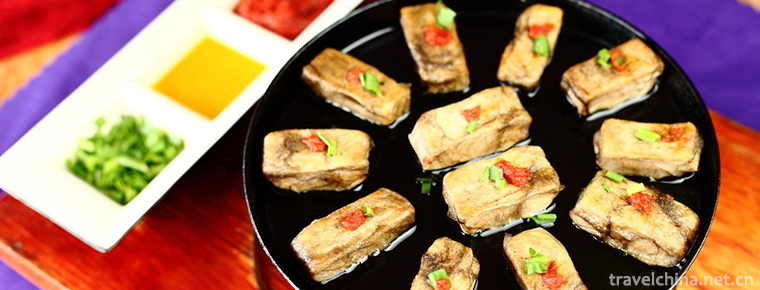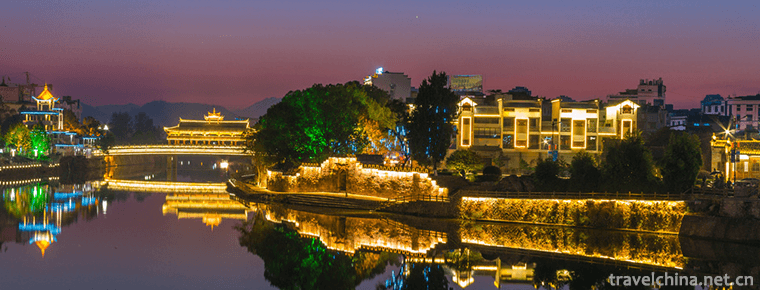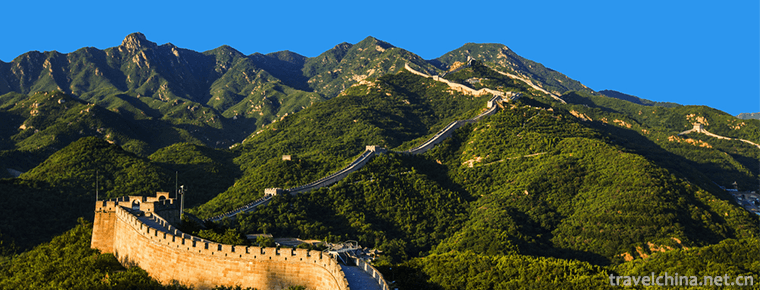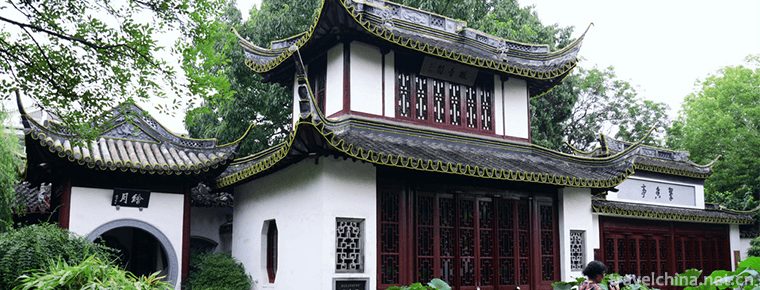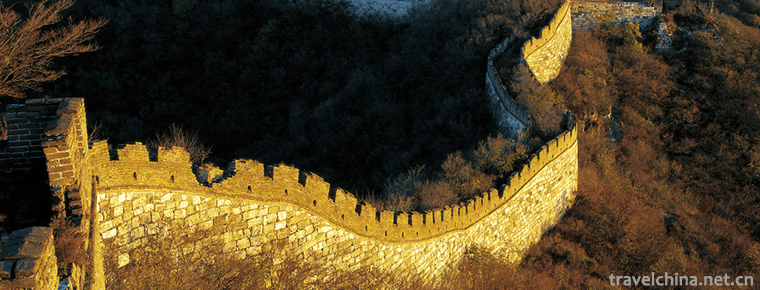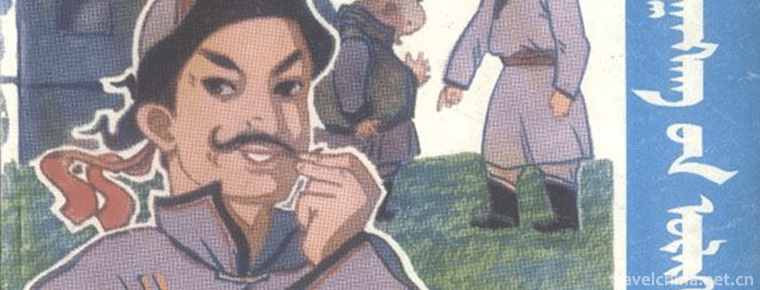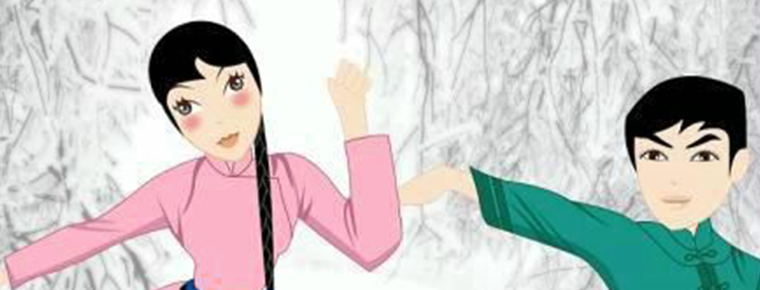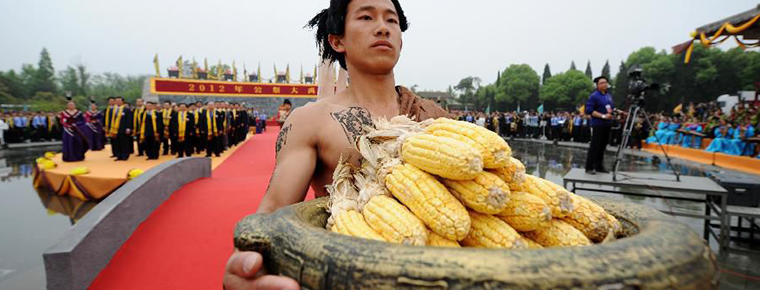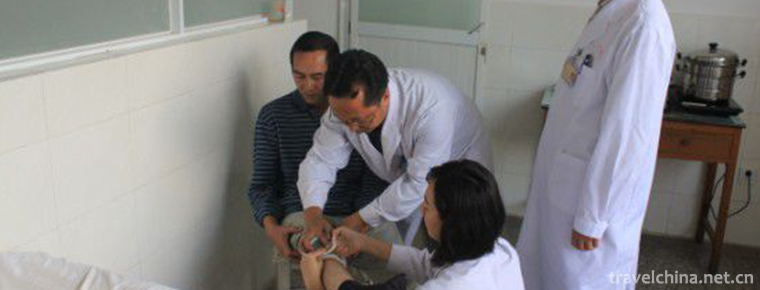Pearl Lane
Pearl Lane
Zhuji Lane, located in Zhuji Village, Zhuji Town, Nanxiong City, Guangdong Province, covers an area of about 3 square kilometers. Zhuji Ancient Lane is one of the national 4A scenic spots and one of the three major root-seeking sites in China. It is known as the "Chinese cultural post station, the root of the world's Guangfu". There are a number of cultural relics and scenic spots in the scenic area, such as ancient buildings, pagodas, ancient banyan and ancient building sites of different dynasties. It is a commercial town in ancient Central Plains and Jiangnan to Lingnan ancient post road, a transit station for Guangfu people, the only ancient alley in Song Dynasty in Guangdong, and it has the reputation of "the first alley in Guangdong". It has built a comprehensive tourism scenic spot which integrates tourism, sightseeing, nostalgia, homesickness and respect for ancestors. It has far-reaching influence at home and abroad. The Lane starts from Juma Bridge in the South and ends at Fenghuang Bridge in the north. It is 1.5 kilometers long. It is the only way to the ancient Meiguan Road in the South and north of the five mountains. Its primitive style and features still exist.
Zhuji Lane has three streets and four lanes, namely Zhuji Street, Chessboard Street and Mazai Street; Susi Lane, Huangmao Lane, Iron Furnace Lane and Lane Lane. There are 381 households and 1742 inhabitants. The current surnames are Lu, Wang, Lin, He, Xie, Zeng, Huang, Zhong, Lai, Liu, Chen, Guo, Zhou, Dong, Lei, Dai, Zhang, Yang, Ouyang, Li, Xiong and 159 others. The surnames of Lei are She and the rest are Han .
In the history of immigration, Zhuji Lane is known as the hometown of Guangfu people. One important factor is that it is the first and transit station for immigrants to enter Lingnan. Here, a basic fact is highlighted, that is, the Guangfu people's clear understanding and grasp of the real living space - Lingnan. A large number of records of genealogy show this concept of geographic divide. Taking Zhuji Lane, located in the southern foot of Dayuling Mountain, as the ancestral residence, which is located in the north and south of Wuling Mountain, can be regarded as the value of Guangfu people's own existence, that is, the "people of Central Plains" and, more importantly, as the "people of Lingnan".
geographical position
At the end of Ming Dynasty, Qu Dajun wrote "Guangdong Xinyu": "The name of Zhujie Lane began in Zhangchang, Tang Dynasty. Before Chang, he was a filial piety man in Jingzong Lane, Nanxiong. Its ancestor rut, born son Xing, cohabitation of the seventh generation. In the first year of Jingzong Baoli, when the emperor heard of his filial piety and righteousness, he gave Zhuju Huanzhi to avoid the taboo of Jingzong Temple and changed his residence to Zhuju Lane.
It is an important commercial town in ancient Central Plains and Jiangnan to Lingnan ancient post road. The Shajiao Inspection Department of the Song Dynasty was located at the northern exit of the ancient lane in Shajiao .
Traffic information
Shaoguan has no direct bus to Zhujie Ancient Lane. It can take a bus from Shaoguan to Nanxiong City. There are buses directly to Zhujie Ancient Lane at the urban bus station.
Historical culture
As for the name of Zhujie Lane, according to Dai Xilun's Annals of Nanxiong Prefecture in Zhili, which was compiled in 1824 by Qing Daoguang four years ago, "Zhujie Lane got its name from Tang Zhangchang. Before Chang, he was a filial piety man in Jingzong Lane, Nanxiong. Its ancestor ruts, the birth of children, the seventh generation together. In the first year of Jingzong Baoli, when the emperor heard of his filial piety and righteousness, he gave the Pearl Ring a ring to keep it in order to avoid the taboo of Jingzong Temple and change his residence to Zhujie Lane. According to Dajun's "Guangdong Xinyu" in Ming and Qu Dynasties and Huang Cibo's manuscript "Zhujie Lane Minority Migration to the South" in the period of the Republic of China and "Datong Pedigree of Jane's Family in Northern Guangdong", there is a suggestion that Zhujie Lane should be named, which is in line with what is said .
In recent years, the Preparatory Committee of Zhujie Lane People's Association of Descendants Migrating to the South of Nanxiong has dispatched staff to investigate and collect the genealogy and genealogy of various surnames in cities and counties in the Pearl River Delta. According to the genealogy and genealogy of Shunde, Panyu, Nanhai, Dongguan, Zhongshan and other cities and counties, the origin of the name of Zhujie Lane is described, which is the same as the statement in Zhili Nanxiong Zhou Zhi. (From Ancient and Modern Zhuji Lane)
The name of Zhuji Lane is widely circulated.
First, the original name of Zhujie Lane was Jingzong Lane, which was later renamed Zhujie Lane because of Zhangchang in Tang Dynasty. Zhang Chang's ancestor Zhang Xing lived together in Jingzong Lane of Nanxiong for the seventh generation. In the first year of Tang Jingzong Baoli, the court heard of his filial piety and gave Zhang Xingzhu a ring of pearls. Because the name of the alley was to avoid the taboo of the temple worshipping the Zong, it was renamed Zhuji Lane. This statement comes from Qu Dajun's Cantonese New Language.
History of immigration in Zhujie Lane
Pearl Alley immigrants can be understood in both narrow and broad sense. In a narrow sense, it refers to the migration of Zhuji Lane itself and the residents nearby; in a broad sense, it refers to the migration through Zhuji Lane, including the migration through Zhuji Lane and the migration through Zhuji Lane in a narrow sense .
The inhabitants of Zhujie Lane can be divided into two types: immigration and migration. To move in means to move in and out of Zhuji Lane and its vicinity, while to leave Zhuji Lane and move to other areas .
The immigration history of Zhujie alley, centered on Zhujie alley, describes the process, characteristics, regularity and origin of the immigration and migration of the inhabitants of the past dynasties.
Previous works on Zhuji's immigration history have been published several times since Huang Cibo, but they are still vague and ominous. It also confuses the narrow sense and the broad sense of immigration, looks at the immigration of Zhuji immigrants, and omits the migration after the Yuan Dynasty. It can be said that it is not a true immigration history, let alone a complete one. This is the starting point of the book .
In the exploration of immigration history, the main contents of this book are :
1. Describe the immigration process of Zhuji immigrants from the weekend to the Song Dynasty, and point out that the main source of Zhuji Lane residents is Lingbei immigrants.
Secondly, the historical facts of the migration of Zhujixiang immigrants to the south in Song Dynasty are discussed in detail. It is pointed out that the main reasons for the southward migration are government persecution, natural disasters, social unrest and wars between the Song and Yuan Dynasties. The migrants to the south are mainly the residents of Zhujie Lane and Nanxiong Basin. Zhujie Lane is the real home of the migrants to the south, not the "transit station" or "just passing by" as some writings have said. The route of south migration and the scale of immigration are also discussed.
Thirdly, this paper makes a preliminary discussion on the migration of Zhujie Lane in Yuan, Ming and Qing dynasties, and points out that there were two large-scale migration to the south in Zhujie Lane in the early Ming and early Qing dynasties .
Fourthly, the subject of overseas colonization and distribution of the descendants of Zhujie Lane immigrants is put forward, and a preliminary discussion is made.
Fifth, through the study of migration routes in Zhujie Lane, some new and possible areas of immigrant descendants are proposed, and the number of immigrant descendants is estimated roughly .
We believe that the real Zhujie Lane immigration should not begin until the Tang Dynasty when there was Zhujie Lane, while the large-scale migration of Zhujie residents to the South began only in the Song Dynasty. In the Song Dynasty, the environment of Zhujie Lane was superior and its economy was developed, attracting residents from both north and south to return. It was only because of turmoil and war that forced migration took place. Because on the main road of transportation, where soldiers are fighting, migration is bound to occur in times of war, and a slightly longer period of war can result in larger-scale migration. So there were several large-scale immigrants in the Song Dynasty. By the turn of the Song and Yuan Dynasties, almost all the inhabitants went south. Traffic highway has brought economic prosperity, and traffic highway is still in frequent war. This is the fortune and misfortune of Zhuji Lane people. The prosperity of Zhuji Lane is due to traffic, and the decline of Zhuji Lane is due to traffic .
Search for the Root and Ask Zuzhu Jixiang
In the first year of Jingkang in the Northern Song Dynasty (1126), the Jinbing invaded the South in a large scale, and the scourge of war spread all over the middle and lower reaches of the Yellow River. After the Jinbing conquered Kaifeng, "more than 40,000 people fled through the Wanshengmen Gate by civilian soldiers", and the Jinbing captured the two emperors of Hui and Qin, historically known as "the difficulty of Jingkang". In July of the following year, Empress Dowager Long led the Sixth Palace, guards and family members to take refuge in the south. In winter, Gao Zong Zhao Gong retreated to Yangzhou through Bian River, and later Linan (now Hangzhou, Zhejiang Province).
After the southern migration of the Song Dynasty, "those who follow the people like returning to the city", which triggered another large-scale Southern migration of the Central Plains. At the end of the Southern Song Dynasty, the Yuan army invaded and Linan fell. The people of the Central Plains who moved south of the Yangtze River had to move south again, and crowded into Guangdong, Fujian and other places.
The southward migration of the Song Dynasty promoted the economic development of the south of the Yangtze River. As the main road of Lingnan transportation, Zhuji Lane on Meiguan Ancient Post Road was very prosperous for a time. At the height of the Southern Song Dynasty, as many as 1,000 peddlers and residents in Zhuji Lane, together with 57 villages in the vicinity of Niutianfang, were just like a busy small city.
I don't know how many times after the repetition of "Central Plains - Zhuji Lane - Pearl River Delta", the people of Central Plains migrated to the Pearl River Delta through Zhuji Lane. Jiajing's Guangdong Chronicle quoted Nanxiong Mansion Tujing as saying: "In ancient times, there were Zhujie Lane... Today the South China Sea has more clothes than its descendants. Qianlong's Annals of Nanxiong Mansion said: "The giant families of Guangzhou's ancestral families mostly relocate from this place." The genealogy of Guangzhou Prefecture compiled in the Ming and Qing Dynasties records that their ancestors came from Zhujie Alley in the Song Dynasty. Zeng Zhaoxuan and Lu Xianshan's statistics and field survey on genealogy and local chronicles show that there are 797 immigrant families in Zhujie Lane.
Xiao Xinglin, Deputy Minister of propaganda department and director of Civilization Office of Nanxiong Municipal Committee of the Communist Party of China, told reporters that Zhujie Lane's status in the hearts of Cantonese people is similar to that of Fujian Ninghua Fossil Wall in the hearts of Hakka people. In recent years, the number of tourists visiting Zhujie Lane every year has reached 100,000, and it is increasing year by year. Overseas descendants of Zhujie Lane are also fond of Zhujie Lane. They come back endlessly to seek their roots and ancestors. They regard Zhujie Lane as the symbol of their homeland and the repository of their deep emotions.
Dreadful monarchs and adulterers set up poisonous schemes and Zhujie Lane people moved southward as far as possible
The original form of "pearl alley people moving south" was handed down orally from generation to generation in the Pearl River Delta of Guangdong Province and the Pearl Alley of Nanxiong City. This is recorded in the family tree of Cantonese-speaking people in the Pearl River Delta. Legend has it that Luo Gui led 97 families and 33 surnames of Zhujixiang people to flee south to the Pearl River Delta area under the cover of Hu Guifei and opened up the territory of Lingnan.
During the Xianchun period of Southern Song Dynasty, the prostitute Duzong of Song Dynasty ignored the imperial affairs and allowed Jia Xiandao to mislead the country. At that time, the imperial concubines surnamed Yihu secretly ran out of the palace because they disliked the court life and yearned for the happiness of the common people. Song Duzong wanted to attract Princess Hu one day and found that she had fled, so he ordered soldiers and horses to search everywhere. Faced with the search of Tianluo and Tianluo, Hu Fei knew she was difficult to escape, so she threw herself into the river and killed herself.
As it happened, Huang Chuwan, a businessman in Zhujie Lane, Nanxiong, hired a boat to do business in Linan, capital city. While standing at the bow of the boat and enjoying the beautiful scenery, he saw a drowning woman floating in the middle of the river and busily rescued her onto the boat and applied decoction. The woman, Hu Fei, was rescued and panicked to be named Su.
Hu Fei and Huang Chu are willing to go to Zhuji Lane for a hundred years. Jia Xiandao, who was ordered by the emperor to pursue Hu Fei, could not search Hu Fei, so he had to return to Song Duzong and say that Hu Fei had thrown herself into the river.
After Hu Fei arrived at Zhuji Lane with Huang Juwan, her husband and wife followed her, men farmed and women weaved, and lived a peaceful life for ordinary people. Hu Fei also taught Zhuji Lane civilians the skills of Central Plains culture and chrysanthemum cultivation, and everyone got along very well.
Who knows, the good times are not long, a gambler in Zhuji alley lost money because of gambling, and tried to extort money without success. He unintentionally learned that Hu Fei was the Hu Fei who was tracked down by the government at that time. In order to get the reward, the gambler reported to the government, and Hu Fei hid in Zhuji Lane.
When Jia Xiandao, a traitor, received the report, his heart was sad. At that time, he claimed to the emperor that he had witnessed Hu Fei drowning and autopsy, but now Hu Fei is still alive, so he is not guilty of "deceiving the emperor".
Therefore, Jia Xiandao set up a poison plan of "killing people and killing people". He wanted to kill all the people in Zhuji Lane without leaving a living mouth and bury the news that Hu Fei was still alive in the world. Jia Xiandao panicked to Song Duzong that the people of Zhujie Lane in Nanxiong wanted to rebel. Dujun Song Du's purpose is to wash Zhujie alley with blood.
Facing the coming catastrophe, the people in Zhuji Alley are terrified. At this time, Gong Sheng Luogui stepped forward and gathered all the people to conspire to escape collectively. After discussion, it is considered that the Pearl River Delta is sparsely populated and suitable for survival. Under the leadership of Luo Gui, there were 97 families and 33 surnames in Zhujie Lane, felling bamboo and rafting, saying goodbye to Zhujie Lane, and traveling along the Shujiang and Beijiang rivers to the Pearl River Delta.
Hu Fei is no longer involved in Zhujie alley villagers, in the face of the turbulent arrival of the imperial army, she resolutely jumped ashore, and the Imperial Army revolved, procrastinating time, so that Zhujie alley people fled to win time. Afterwards, Hu Fei threw herself into the well.
From then on, the people of Zhuji Lane have been handed down from generation to generation in the Pearl River Delta. The story of "Zhujie Lane people moving south" extols the unity spirit of Zhujie Lane people who are not afraid of violence and "a family with different surnames".










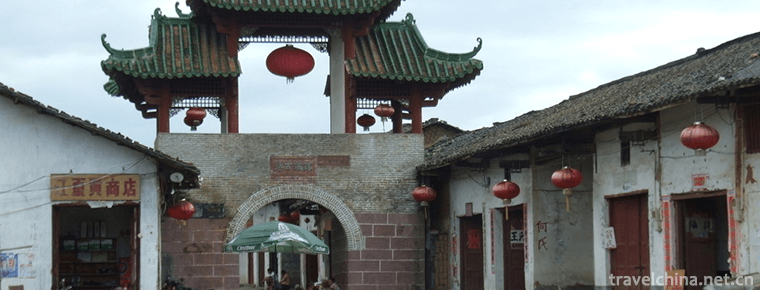
-
Mao tofu Fried bean curd
Mao tofu Fried bean curd is a famous traditional dish in Huizhou, Anhui Province, and is well known for its vegetarian delicacies at home and abroad..
Views: 232 Time 2018-11-27 -
Taining Scenic Tourist Area
Taining Scenic Spot: World Geopark, National AAAAA Class Tourist Spot, National Key Scenic Spot, National Forest Park, National Geopark, National Key Cultural Relics Protection Unit.
Views: 182 Time 2018-12-08 -
Great Wall of Ming Dynasty in Datong County
According to documents, the Great Wall of Qinghai Province in the Ming Dynasty was built in the middle of the Ming Dynasty. It lasted 51 years from 1546 to 1596..
Views: 160 Time 2019-01-07 -
Guyi Garden
Guyi Garden is located in Nanxiang Town, Jiading District, northwest suburb of Shanghai. It was built in Jiajing period of Ming Dynasty. Its original name is "Yiyuan". It was taken from the .
Views: 120 Time 2019-01-12 -
Jiankou Great Wall
The Great Wall is located in Badaohe Township, northwest of Huairou District, Beijing suburb. It is 1141 meters above sea level and about 30 kilometers away from Huairou County..
Views: 237 Time 2019-01-21 -
The Story of Barragan
Stories of witty figures of the Mongolian people in China. Long-term spread in Inner Mongolia, Xinjiang and other Mongolian areas. The protagonist Balagan Cang is the representative of the working peo.
Views: 231 Time 2019-04-02 -
Xiling mountain song
Xiling Mountain Song is a national intangible cultural heritage with a long history, primitive simplicity and smooth melody. Its color and mode contain some elements of Tibetan, Qiang and Han folk son.
Views: 350 Time 2019-04-19 -
Da Yu memorial ceremony
The Dayu Festival is an ancient Chinese traditional folk sacrificial activity. Dayuling is located in Huiji Mountain, southeast of Shaoxing City, Zhejiang Province. Dayu Mausoleum is the burial place .
Views: 93 Time 2019-04-23 -
Yi Medicine Water Plaster Therapy of Yi Medicine
Yi medicine is the summary and wisdom crystallization of the Yi people's long-term struggle against disease, and it is an important part of the great treasure house of Chinese medicine. There are thou.
Views: 202 Time 2019-07-12 -
Zhuang Drama
Zhuang Opera, a local traditional drama in Guangxi Zhuang Autonomous Region, is one of the national intangible cultural heritage..
Views: 173 Time 2019-08-16 -
Cheongsam goes to the world
The Organizing Committee of the 2010 Shanghai World Expo has customized 60 sets of tapestry cheongsam as gifts from the Chinese government to the wives of heads of state, each worth 100000 yuan..
Views: 335 Time 2020-12-11 -
The evolution of Guangyuan
Guangyuan was ruled by Yin state in Xia Dynasty and Ju state in Zhou Dynasty. At that time, the state of Ju was in a state of tripartite confrontation with the states of BA (governing Chongqing) and Shu (governing Chengdu)..
Views: 299 Time 2020-12-15
